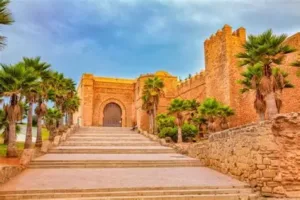Rabat – Archeological investigations revealed several prehistoric relics of national significance in Semara, a city located in Southern Morocco, last month.
Spearheaded by local archeology authorities, the expedition located over 10 sites bearing wall drawings in the ‘Aksat Khankha’ area, according to official sources.
The art found in the area is an extension to similar art found in sites in neighboring Tan Tan, explained the official statement.
Archeologists have previously unearthed similar art in ‘Ashkik Tsmimt,’ ‘Fedret Eldabgha,’ ‘Wed Tsmimt,’ ‘Awinat Azker,’ ‘El Farsia,’ ‘Jarfiat Eldamiri,’ ‘Erkiz Lmkasm,’ and ‘Boudhir’ sites, indicates the statement.

The findings point to human activities in the region dating back to the prehistoric era, a statement to the pivotal historical role the area played in binding Morocco’s north and south regions, the statement said.
In addition to the sites containing art, the expedition also revealed a significant number of graves, and mourning and ritual temples, that reachers have linked to the pre-Islamic era, the statement said.
The graves and temples were are located in ‘Amghad,’ ‘Lrmath,’ ‘Karet Elhess,’ ‘Khenket Lksat,’ and ‘Hassi Eljadriya’ sites, details the official statement.

Given the historical and cultural relevance of these sites, Morocco’s Culture, Youth, and Communication Ministry will organize a second scientific expedition to the sites.
The expedition will be tasked with extracting the relics and taking the necessary measures to document the findings. The expedition will also oversee the preservation of the relics, explains the statement.
The archeological sites add to an existing body of evidence indicating that human activities in Morocco’s southern regions predate recorded history.
Read Also: Morocco’s Most Emblematic Historical Events in Pictures
















